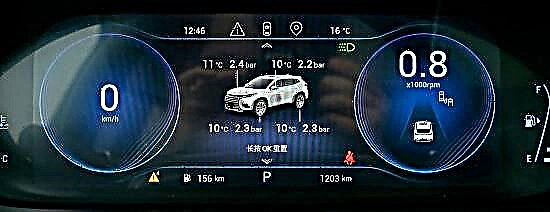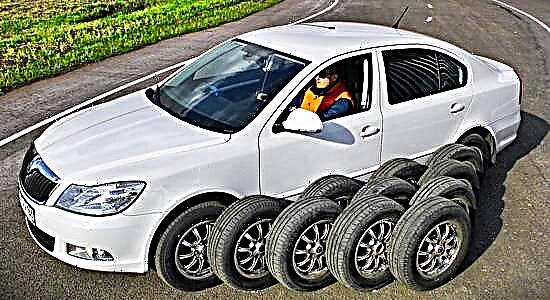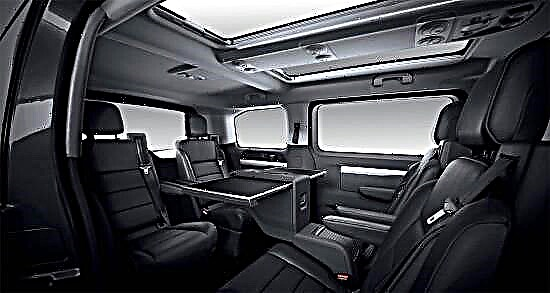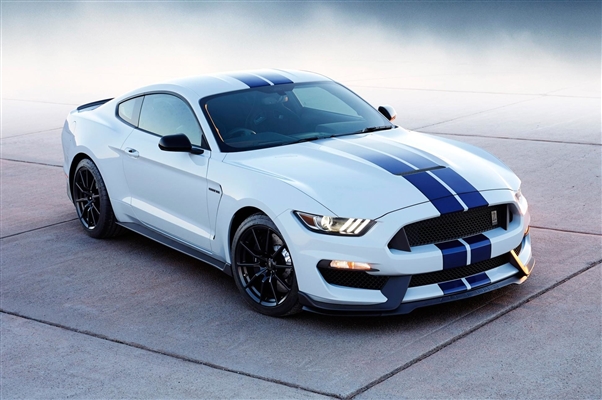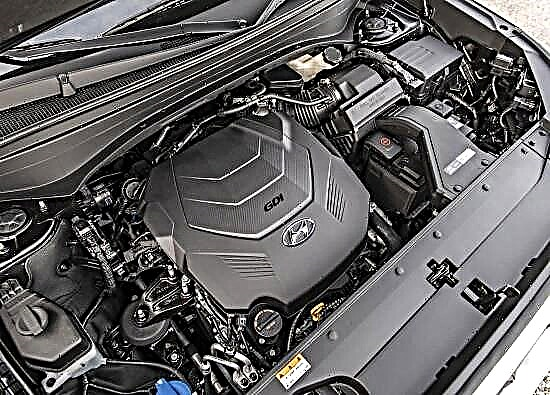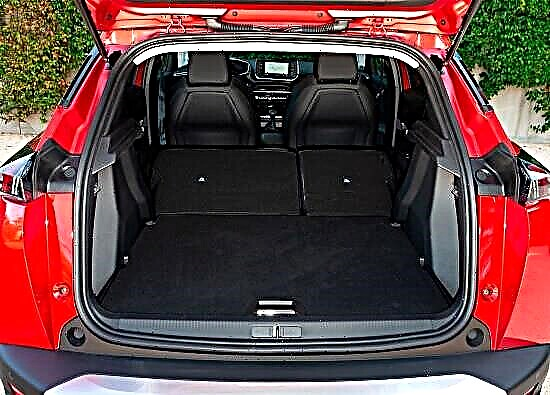Cars of B- and C-classes on the Russian market are most massively represented, and this means only one thing - 15-inch tires are the most demanded among car owners, since it is this dimension that is usually recommended for most subcompact and compact "iron horses" directly by the plant - the manufacturer.
And, as they say, demand generates supply, which is why in Russia you can find summer tires of 195/65 R15 standard size for any “taste and color”, from expensive premium options to budget economy models. But does it make sense to seriously overpay? How does the cost of certain tires affect their consumer and performance characteristics? It is possible to fully answer these questions only by carrying out road tests in conditions close to "combat", and - necessarily using one of the most popular golf-class cars on the Russian market.

In total, 16 tires of different price and origin were selected for tests with one of the most massive standard sizes in our country - 195/65 R15.
And the most expensive participants turned out to be Continental PremiumContact 6, which to a certain extent can be called a novelty of the season - in general, the model itself has been on the market for several years, but it did not have a 15-inch format before. They were accompanied in the premium segment by another novelty Goodyear EfficientGrip Compact, Hankook Ventus Prime 3, as well as Nokian Hakka Green 2 and Pirelli Cinturato P1 Verde (noteworthy, but the last two options are being systematically updated).
The middles in terms of cost were the new Yokohama BluEarth-Es ES32, as well as such popular summer tires as Dunlop SP Sport FM800, Nordman SX2, Toyo Proxes CF2 and Matador Hectorra 3.
Well, the honor of the "economy class" fell to defend at once six models, among which the tires Kormoran Road Performance and Nexen N'Blue HD Plus, which are well-sold in our country, were also worn out. Well, the list was supplemented by the well-known and most affordable Viatti Strada Asimmetrico tires in the test, Compasal GrandEco and Rapid P309 “dark horses”, as well as special shoes with M + S type tread (that is, Mud + Show, which means “ Dirt "+" Snow ") Triangle AdvanteX TC101. By the way, the "all-season" tires did not come to the test by accident, because it is interesting how they will show themselves against the background of purely "asphalt" variants.
Sustainability
Summer tire tests were carried out at one of the test sites in fairly dry weather, without significant changes in ambient temperature. In addition, ABS and ESP were not disabled on the carrier vehicle, so that the final results would be more "vital". And the first test that all "experimental" underwent was the assessment of directional stability and behavior of the car during "soft" maneuvering at a speed of 130 km / h (this is the "maximum speed" for some Russian routes).
And here the leading position was taken by three models at once - Continental, Goodyear and Pirelli, which distinguished themselves with clear and understandable reactions to steering actions, as well as predictable and reliable behavior.
Matador and Viatti were among the outsiders - the car showed low information content, large steering angles and delayed reactions. Such tires force the driver to concentrate too much on the control of the "iron horse", since they do not allow to understand the trajectory of movement at an intuitive level, which is why they contribute to rapid fatigue, especially on long journeys.
It is noteworthy, but the “all-season” was among the worst, as it received almost identical claims.
Profitability
After all the tires were warmed up, it was time to test for efficiency, which was carried out on a horizontal section of the road, and twice (first in one direction and then in the other direction), in order to exclude the influence of even a mild wind.
Surprisingly, both at the “country” speed of 90 km / h and at the “city” speed of 60 km / h, the economy class models - Kormoran and Matador - performed better than others.
When driving fast, there were no outsiders as such, since exactly half of the sets of tires turned out to be only 3% more "voracious" than the leaders, but at the city speed limit, Viatti tires showed themselves worse than others - the car needed 10% more fuel at once than shoes with the best result, and such a difference during operation is already very noticeable.
It is worth noting that the Triangle, with its all-season tread, has left behind almost half of the purely road summer tires in terms of economy.
Comfort
The next test cycle is an assessment of acoustic comfort and ride comfort, which was carried out on roads with broken surfaces, causing the wheels to shake, kick and make noise.
An interesting fact is that all summer tires demonstrated acceptable noise levels, but the best results were still achieved by Continental, Kormoran and Nexen. As for the smoothness of the ride, here Nordman was the leader (by the way, only on them the car showed itself flawlessly), but Viatti and Kormoran turned out to be the most shaking and more actively than others transmitted all the unevenness of the roadway to the body and seats.
It was assumed that Triangle tires with their rough tread would be annoying with excessive noise, but no - they practically did not annoy with extraneous sounds, with the exception of a muffled pulsating rumble, which was lost against the background of moderate general noise.
Well, in terms of smoothness, the all-season tires did not show themselves better than even the toughest "asphalt" tires.
Tenacity
The next step is to overcome a dirt rise with a slope of 12%, since for summer tires it is important not only how they demonstrate themselves on the asphalt, but also how they behave outside of it. And the main essence of this exercise is to assess how the car starts and accelerates (naturally, with the traction control system turned off).
Kormoran and Viatti proved to be more confident than others on the dirt road, on which the car distinguished itself with a confident start and effective acceleration, and even with moderate slippage. True, it is better to avoid excessive slippage on them.
The worst clinging to the surface of the Continental, Nexen and Hankook, on which it is generally better not to leave the paved roads, because the car literally refused to go on them even with a slight excess of traction.
Well, who was out of competition outside the asphalt, it was the "toothy" Triangle: they provided the necessary traction both when starting off and when accelerating. Moreover, their all-season tread proved to be much better in such conditions than on asphalt roads.
Braking
Few would argue, but braking is one of the most significant exercises in all tests in general, and it was carried out both on wet (from a speed of 80 km / h) and on dry (from 100 km / h) asphalt. It is worth noting that in both cases, the deceleration was carried out to a speed of 5 km / h, and not to a complete stop, in order to avoid blocking the ABS wheels, and thereby distorting the accuracy of the results.
On wet pavement, Hankook proved to be the most efficient - the car slowed down in only 23.9 meters. The Continental and Nokian scores were slightly worse - 24.8 meters. But the obvious outsider in this test is the Rapid tires, which rolled as much as 27.9 meters.
The dry asphalt pavement did the best for the Continental with 37 meters, while on Viatti flying tires the car slowed down from 100 to 5 km / h after 43.6 meters.
And not surprisingly, the "toothy" Triangle tires were blown to smithereens by ordinary "asphalt" tires, both on wet and dry surfaces - their braking distances were 29.6 meters and 44.5 meters, respectively.
Rearrangement
It's no secret that there are two troubles in Russia - "fools and roads." Moreover, each of them can suddenly appear on the way and force the driver to maneuver sharply, bypassing the obstacle.And how will the tested tires behave in such a situation? The so-called "rearrangement", that is, a single lane change at a distance of 12 meters, carried out on both wet and dry asphalt, will help to figure it out.
On a wet surface, the car felt most confident on Hankook tires - on them the speed when changing over was 70.1 km / h. At the same time, the outsider of this exercise showed a good result, lagging behind the leader by only 10% - 62.8 km / h.
On dry asphalt, Nokian tires took the lead, while Viatti turned out to be the worst: on the first, the car drove at a speed of 72.3 km / h, and on the second - 66.8 km / h.
As for the overall behavior on the road, then on the wet road Continental and Pirelli distinguished themselves with impeccable results, which demonstrated good information content, instant reactions, as well as normal steering angles. But on a dry surface, only Continental were able to confirm their leadership.
Kormoran, Rapid and Nexen were the obvious outsiders, both on wet and dry asphalt, which received similar remarks. All of them had long delays in turning the steering wheel, forcing the driver to turn the "steering wheel" at significant angles, and there was also a lack of grip. In addition, the Nexen lost points for low information content, the Rapid for excessive front axle drift, and the Kormoran for unstable behavior.
The all-season Triangle model was noted for quite acceptable handling and close to average speeds on both dry and wet surfaces. Yes, such tires did not give any reason for pride, but they certainly did not hit the face in the dirt.
Final results
Remarkably, none of the tested tires showed clear bursts or dips - they are all relatively flat in properties, albeit with blurred individual characteristics.
- Continental PremiumContact 6 tires became the "gold medalist" in the tests, which showed themselves exceptionally well in all disciplines, and in many of them even left the rest behind. However, it is difficult to call them "universal", since such tires are most optimal for urban use, and it is recommended to use them on a dirt road only in extreme cases.
- “Silver” went to Hankook Ventus Prime 3 - in general, they did not go far from the leaders and in all exercises turned out to be either almost correct or correct. These tires will be appreciated by most drivers, with the exception of active driving enthusiasts.
- “Bronze” was won by Nokian Hakka Green 2, which generally showed about the same results as a couple of previous test subjects, that is, they did not seem to surprise with anything, but at the same time did not receive any obvious comments. Moreover, this is just the most "universal option", suitable for purely urban exploitation, and for forays on dirt roads.
- The Pirelli Cinturado P1 Verde tires, which turned out to be really balanced, strong in almost all exercises, just fell a little short of the podium. The most advantageous side of such shoes is excellent directional stability at high speed, which makes them optimal for long trips, and the weakest are unpleasant rigidity and modest braking distance on dry surfaces.
- The fifth line is occupied by the Dunlop SP Sport FM800 tires, which have become one of the most balanced and even in terms of the totality of all properties. That is why they can be recommended to almost any driver without any restrictions.
- In sixth position - Yokohama BluEarth-Es ES32. It is noteworthy that they turned out to be really "universal", speaking without any serious remarks at all and yielding to Dunlop only in the speed of performing the rearrangement.
- Seventh place went to Nordman SX2, which did not have a single failure, and at the same time they became the softest of all, that is, they will especially delight lovers of a comfortable ride.
- Toyo Proxes SF2 staked out for themselves the eighth line - in general, they showed even results in almost all disciplines, having received insignificant remarks only for their behavior when performing extreme maneuvering on a wet road.
- The ninth position remained for Goodyear EfficientGrip Compact, which slightly disappointed with the smoothness of the ride, grip on the ground and handling on dry surfaces when changing. At the same time, the advantages of these tires are clear directional stability at high speeds, which makes them suitable for long journeys, as well as predictable handling on wet surfaces.
- Closed the TOP-10 tires Nexen N'Blue HD Plus, which surpassed all their opponents in terms of comfort, but at the same time could not prove themselves normally during extreme maneuvering. That is, such tires are quite suitable for themselves for daily urban use, but they should be avoided for those who like active driving.
- Place at number eleven was taken by Kormoran Road Performance - yes, they allow you to save fuel at any speed, but they strain the driver when performing sharp maneuvers and are unpleasantly rigid, although they do not allow unnecessary noise.
- Compasal GrandEco performed only slightly worse, taking the twelfth line. They are most suitable for lovers of quiet driving, since they do not have the best handling during sharp maneuvering, and will not annoy when traveling long distances, as they can boast of good directional stability and good braking characteristics.
- In thirteenth position - Matador Hectorra 3. Yes, they seem to be able to save a little fuel, but otherwise - mediocre, but especially in terms of braking properties.
- The fourteenth and fifteenth places were occupied by Viatti Strada Asimmetrico and Rapid P309, which generally showed the same results, but: the former only had satisfactory behavior when performing sharp maneuvers on wet asphalt, increased fuel consumption, an unclear course and low ride, and the latter - worse handling on a wet road, but slightly better directional stability, efficiency and acoustic comfort.
- Triangle AdvanteX TC101 tires are out of category. As expected, they are inferior to almost all opponents in purely asphalt disciplines, but they win back on a dirt road. Due to the movable tread cut by the lamellas, all-seasons have weak braking properties, mediocre directional stability and excessive rigidity. That is why they are ideal for those who spend most of their time on unpaved roads and prefer a leisurely ride on asphalt.
If we consider 15-inch summer tires in terms of financial benefits, then the most rational choice (especially on a limited budget) is the Nexen N'Blue HD Plus. In general, Compasal GrandEco, Kormoran Road Performance, and Viatti Strada Asimmetrico justify their cost.
You will have to overpay, and quite significantly, for the Matador Hectorra 3, and quite possibly for the relationship with the eminent "senior" brand Continental.
In the case of "premium" products, Hankook Ventus Prime 3, Nokian Hakka Green 2 and Pirelli Cinturado P1 Verde fully correspond to their price tag, while the purchase of Goodyear EfficientGrip Compact and Continental PremiumContact 6 tires will be the most unprofitable, that is, in many ways, overpayment is here will make up exactly for the "eminent name".

